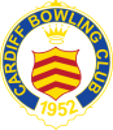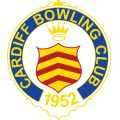Our connection with Wales
In 1952 the Cardiff Bowling Club in Sophia Gardens, Cardiff, Wales extended the honour of incorporating their club insignia into our club badge and pocket. Their club was built in Sophia Gardens in 1878 by the Most Honourable John Patrick Crichton-Stuart, 3rd Marquess of Bute, KT KSG KGCHS who became president of the club.
In 1958 the British Empire & Commonwealth Games were held in Wales and the Cardiff Bowling Club was one of the three venues used for lawn bowls. The manager of the Australian team, Dr Neil Benjamin, took with him a banner from our club to be presented to the Welsh club. This excerpt from the Welsh Club’s centenary booklet tells the story …
“The Cardiff Bowling Club of NSW in Australia was granted permission to copy the club badge for their club; a framed pocket badge and two lapels were sent to them for this purpose.
The Cardiff green was one of three used for the Lawn Bowls section of the Empire Games in 1958 and the presentation of the victory medals took place on this green. The Duke of Edinburgh visited the club during the week of competition and the principal officers of the countries involved in the competition were introduced to him. The condition of the section of lawn on which the introductions took place were in such a magnificent condition due to the efficiency of the greenkeeper Mr Bill Lloyd, that His Royal Highness asked prior to stepping on the area, ‘if it was in order for him to walk on it.’
At the conclusion of the bowling session, the medals were presented to the winners of the various competitions followed by the presentation of a beautiful pennant to Mr H. Standen, the captain of the Cardiff club by the manager of the Australian team with greetings from Cardiff Bowling Club in New South Wales, Australia.”
The early years
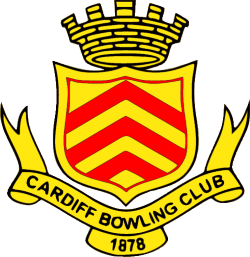
In the early 1940s there was an area of vacant land behind Cardiff No. 1 Oval between Queens Avenue and George Street.
The section of this land that today bounds Cardiff Bowling Club was a marsh and it was used for saw mill refuse from Smith’s Sawmills.
When the club was developed, Myall Road finished at what is now the Newcastle Street roundabout and Winding Creek ran between the club and the town. Access to the bowling club was along a dirt track at the end of Cardiff Oval where Myall Road runs today. An early mailing address of the club was “Off Macquarie Road, Cardiff”.
On 11 November 1947 a public meeting was held at the Star Theatre, Cardiff to form the Cardiff Amenities Committee. Alex Dowling was elected President, Odie Johnson as Secretary and Harold Lindsay as Treasurer. The object of this committee was to acquire more land from the Joint Coal Board through the Lake Macquarie Shire Council to extend sporting facilities in Cardiff. Their intentions were to extend the then existing Cardiff Sports Ground and add an extra sports oval, build a six rink bowling green and club room, two tennis courts with lighting, two basketball fields and a children’s playground.
The first job for the new committee was to have Queens Avenue and George Street between Railway Parade and William Street closed. Odie Johnson commenced corresponding with the Department of Lands through the council to have this eventuate. After several years of pressure from Odie and the Amenities Committee, the matter of closing the roads was listed for consideration by the Lands Board at Newcastle Court House on Thursday, 14 December 1950. A petition was presented at the court signed by several residents who were against closure of the road. The petition was rejected as only one person who signed the petition was present at the court. The Government Gazette published on 16 January 1952 gave notification of the road closure.
Founding of the Bowling Club
While all this was going on, the Joint Coal Board made an offer of £1760 for a bowling club provided 40 or more persons were interested in playing. This was left in the hands of an Amenities Committee member, but it never eventuated.
A meeting with Les Dove, secretary of the Chamber of Commerce and a few of his committee was held at the Royal Hotel, Cardiff on 21 September 1951. It was decided at this meeting to send three representatives from the Chamber to the next Amenities Committee meeting. Frank Mesh, John Davis and Fred Iceton attended, and from this meeting, the forming of a bowling club was left in their hands.
Herb Merrion attended one of the early meetings of the Amenities Committee held in the RSL building and informed them that he would donate land situated through the subway (where the old Dairy Farmers depot stood) to build a bowling club. The offer was rejected by the committee as it was thought it could detract from their proposal currently before the council.
A meeting to form a bowling club was called for 17 December 1951 at the Star Theatre, Cardiff. The meeting was opened by Mr F. Mesh. Those in attendance were Messrs I. Forbes, R. Hodgins, H. Hodgins, W. Johnson, A.W. Jones, W. Lumsdaine, W. Kelly, A. Colley, H. Scheffe and L. Gilmour. A committee was formed with I. Forbes, President; H. Scheffe, Secretary; J. Gilmour, Treasurer; F. Mesh and R. Hodgins, Vice Presidents; with A. Jones, W. Kelly, H. Hodgins, F. Iceton and W. Lumsdaine, Committee Members.
Their objectives were to inform council of their intentions to form a bowling club, open an account with the Commercial Bank of Australia and obtain foundation members at a cost of ten shillings and sixpence joining fee.
On 7 January 1952, the inaugural meeting of the Cardiff Bowling Club was held at the Star Theatre, Main Road, Cardiff. At this meeting, the first committee of the bowling club was elected.
President: Mr I. Forbes
Senior Vice President: Mr G. Frith
Vice Presidents: Mr W. Kelly, Mr R. Hodgins
Secretary: Mr H. Scheffe
Treasurer: Mr D. Gilmore
Committee: Mr A. Jones, Mr D. Morgan, Mr E. Lumsdaine, Mr F. Reid
Social Committee: Mr W. Kelly, Mr J. Fenwick, Mr Marshall, Mr Gleeson, Mr Harrison, Mr McCann
Greens Director: Mr I. Forbes
Patron: Mr H. Merrion
Auditors: Mr J. David, Mr M. Johnson
Solicitor: Mr W. Cannington
The council’s representatives were Mr O’Brien and Mr Wallnosh.
From this meeting the Cardiff Bowling Club made application to Lake Macquarie Shire Council for redrafting of the existing plan of the area with the foundations of the two greens to be laid down and one green to be commenced immediately. They also applied to the NDBA for affiliation.
A set of rules was drawn up and put to a general meeting of the bowling club on 21 January. After discussion, changes were made and these rules were adopted for the Cardiff Bowling Club.
The committee convened a meeting in February 1952 of the ladies in the district to form a Ladies Auxiliary to assist in fund raising. Joan Kelly, Chris Bone, Connie Hodgins, Lottie Hodgins, Lillian Sneddon, Vera Edwards, Irene Sheean, Joan Perin, Madge Campbell, May Woodward, Marion Winship, Marje Tucker, Lena Morris, Mrs Baker and Mrs Holdsworth became the Ladies Auxiliary. These ladies worked tirelessly over the next few years running stalls in front of the Star Theatre, organising raffles and catering for the men at working bees and functions. They had their own bank account and supplied equipment and furniture for the club in the early years.
The building of the clubhouse and No. 1 green
A sub-committee was formed in February 1952 comprising Mr I. Forbes, G. Frith and D. Gilmour to investigate plans for a club house. It took twelve months for the plans to be drawn and approved by the committee and in February 1953 they were forwarded to the council. Whilst awaiting approval, they were offered the Federal Hall at West Wallsend by Tooth’s Brewery. The committee made an offer of £500 and investigated moving it to Cardiff. An application was made to the Joint Coal Board for a grant of £1000 for the building of the club house. The Joint Coal Board considered the Federal Hall “derelict” and would only make the grant available for a new building.
The council urged the committee to heed the Joint Coal Board’s advice and commence building the club house and to keep within the finance available and leave the internal linings, painting and sewerage to a later date. On Saturday, 9 May 1953 the piers were set for the club house foundations.
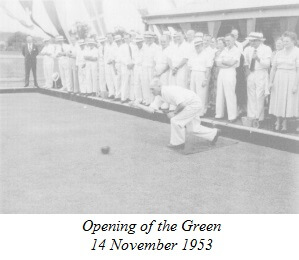
All the early work on the club house and the No. 1 green, the top soil laying and grass planting was all done voluntarily by the members. The council assisted with the equipment for the foundations. Working bees were advertised on the slides during interval at the Star Theatre and members had to work 12 hours a month or be fined one guinea (£1/1/-) each.
Sprinkler systems were borrowed from Islington Bowling Club and a roller received on loan from the Ironworkers Association. Six loads of Maitland soil was laid as top soil on the green using a billy cart purchased from a member for £5.
In March 1953 an electric mower and roller was available for purchase from the council for £125 deposit and £125 payable interest free over the next three years. The equipment was purchased and the club had its first mower and roller.
During the building of the green, bowls were organised for members at various clubs so as to keep members enthused. The first games were played on the green on Sunday, 10 May 1953. Although the green had not officially been opened, progressive fours were played over 4 weekends. However the green started to deteriorate and the Greens Committee closed it for renovation.
The struggle by Greens Director Les Woodward and his volunteers working on the green continued until 14 November 1953 when the District President Wal Young officially opened the No. 1 green, the Les Woodward Green as it is known today. The opening was attended by representatives of the Joint Coal Board, local government, local sporting bodies, the press and 27 bowling clubs from throughout the district.
Opening of the club house
The club house although not finished for the green opening was well on the way and usable. The first meeting held in the club house was on 11 May 1953 and 58 members attended the meeting held there in July. Mr W. Kelly went guarantor at the bank for the sum of £350 to enable the club to purchase their first poker machine (a sixpenny machine) and this was installed on 6 November before the green opening.
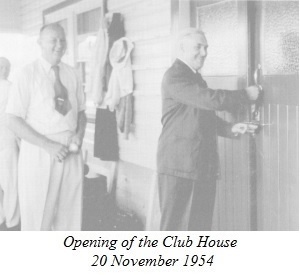
The members continued to work on the club house lining and painting, providing electricity, etc., having it in a pristine condition for the official opening on 20 November 1954. Mr S. Cochran of the Joint Coal Board officiated in front of members, dignitaries and representative from 27 other bowling clubs.
They obtained a temporary licence for the day and ordered 2 x 18 gallon kegs, 4 x 9 gallon kegs, 6 dozen bottles of beer, 6 bottles of Scotch, 12 bottles of rum and 6 bottles of wine.
At this stage a second poker machine had been installed, and with liquor being supplied by Emanuel’s Hotel at West Wallsend, the club’s finances started to climb. The first two people to be employed by the club were Mr Ron Williams as the Bar Manager and Mr T. Tucker as a part-time greenkeeper.
Bowls had become very popular by 1954 and Cardiff entered its first pennant teams that year; a No. 4 grade and two No. 5 grades. Players of today probably wouldn’t accept the conditions of play for pennants. Games started at 2:00 pm and the bar was closed during pennant play and all players would leave the green for afternoon tea during the game.
The first club games were also played during 1954 with club singles, pairs and fours being played for prize money.
An honour board was installed and the first bowler to be honoured with his name inscribed was Les Woodward, our first Club Champion.
The club obtained its liquor licence in July 1955 and was now buying its beer from Tooth’s Brewery. Beer prices at the time were seven pence for a five-ounce glass and one shilling for a 10-ounce glass. Initially bar trading hours were from 5:00 pm till 6:30 pm and 7:30 pm till 10:00 pm weekdays and from 10:00 am till 6:30 pm Saturdays and Sundays. Unfortunately the first two weeks of bar trading was poor resulting in mid-week trading being suspended until a later date.
Building of the second green
At a special committee meeting on 29 August 1955 it was decided to accept a quote from Messrs A.W. Drew and W. Pallett for the sum of £1760/11/- (less £104 if they accepted modifications to the ditches) to build the second green. Work began in October 1955. In April 1956 the contract was cancelled by the board who were not happy with the progress and Mr W. Gumb was contracted to complete the job.
In January 1956, 27 members took out debentures with the bank for £15 each to enable lights to be erected over the existing green to allow night bowls to be played. By 27 January the lights had been installed and officially switched on by the District President Ken McLeod.
1957 was a reasonably quiet year, although the No. 2 green was finished, a new coring machine and Scott Bonnar mower were purchased together with an indoor bowling set, a 6-valve radio and a piano. That year may be of interest as it showed the club held accounts with Hustlers, Sorbys, New Gordon Small Goods, Waltons, YY Aerated Waters, Reg A. Baker, Kalamazoo, Bargain Arcade, Rayfords and the Cooperative Store to mention a few. Except for Kalamazoo, none of these businesses exist today, but the names may bring back memories to older members of the club.
At the Annual Meeting in 1958 Ian Forbes, the foundation President was honoured with life membership. Over the seven years he held the position, he saw the club grow from a swampy wasteland to a thriving club with two greens and attractive club house. Most of the credit for this growth can be attributed to Ian’s drive and leadership.
The club employed its first full-time greenkeeper on 16 March 1958 when Mr J. Redman took up the position.
The 1960s
In September 1960 the board accepted a quote for £5350 for extensions to the club house. A new bar was built in this extension and a cool room added behind the bar at a cost of £1650 by Northern Refrigeration. The extensions were opened on 28 May 1961.
By September 1961, the club had admitted its first social members.
In 1964 the club won its first NDBA Pennant by members in the No. 6 Grade. The Pennant was unfurled at a Gala Day on 15 January 1965 attended by representatives of the NDBA, several clubs and Cardiff members.
Further extensions to the club house were again discussed from early 1964, plans drawn up and tenders called. The alterations began in March 1966 and the auditorium, top bar, board room, kitchen, new toilets and change rooms were built. Alterations were made to the existing original club house with the floor being lifted and the front wall moved a couple of feet. New furniture was purchased including 10 fixed leg tables, 10 folding leg tables and 160 chairs being supplied by Namco.
The club also won its second NDBA Pennant in 1966 by the No. 3 Grade. The unfurling and opening of the extensions were held on 12 February 1967. Decimal currency had been introduced twelve months earlier and beer prices were now 15 cents a middy and 20 cents a schooner.
On the evening of Saturday 12 November 1967 a special cabaret was held and a presentation was made to Lindsay Gee and Ann Prichard who were both selected to represent the state. They had both held the District Singles titles in the NDBA and NDWBA. This was an achievement for the club and the players. Our club had the honour of having a District Singles champion three years running with the following players: Daphne Hancock 1964-65, Ann Pritchard 1965-66 and Lindsay Gee 1967.
1969-1970 saw renovations to the main bar and improved acoustics to the bar area with a suspended ceiling. Seven new octagonal tables and 50 new chairs were purchased and a Kleenmaid ice making machine added to the bar equipment.
The 1970s
In the early 1970s extensions and renovations were started in the club kitchen, new floor coverings in the club and eight new hexagonal tables and 45 chairs were purchased. Ditches were replaced on the No. 1 Green and bent grass was sown amongst the existing grass.
1974 saw the addition of a store room at the west side of the auditorium bar. A contract was let to Davis & Spence to replace the lighting to the No. 2 green. In July that year a decision was made to run a night tournament to perpetuate the memory of George Russell following that board member’s death.
Graham Fahey was employed as greenkeeper in July 1975. Shortly afterwards, the No. 1 green was named “The Les Woodward Green” in appreciation for his contribution to its construction and the many hours he spent working on it since. A special gala was held with dignitaries invited for the occasion.
The Honour Board was erected on the southern wall of the auditorium in the late 1970s. Major renovations were carried out on the No. 2 green under the supervision of Graham Fahey. The car park at the end of the No. 2 green was constructed and tar sealed.
The 1980s
The 1980s saw some major changes. The only addition to the club house was the building of toilets on the western end of the auditorium and the fitting of Braemar forced draught air-conditioning throughout the club.
In 1982 the board decided it was time to employ a full-time club manager. On 8 February, after 9 years of continuous service as honorary secretary, W.J. Lawrence (known to all and sundry as Billo) was employed as club manager.
In 1983 it was necessary to have 40 mm shaved from the surface of the Les Woodward Green to comply with the specifications of the RNSWBA. A decision was made to take it out of play in July and whilst they were renovating, inspect and replace the drainage if required. The board accepted a quotation from Don Moodie for the sum of $35 000.
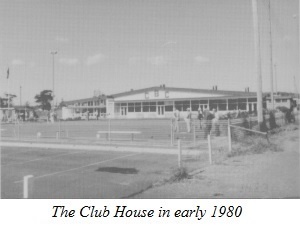
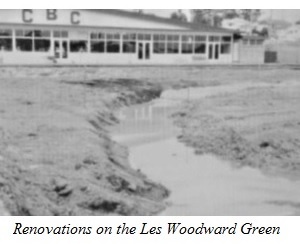
The social secretary organised a cabaret and barbecue on the green on the Saturday night before the renovations commenced.
The machinery arrived on the Monday and the work started. About 500 mm of top soil and filling was removed. As the small bulldozer was working in the top right hand corner near the main front gate, it sank about a metre down to the driver’s seat. It was evident the marshland and sawdust used to fill the area in the early days was not a good foundation for a bowling green!
The green when finished was returfed with Greenleas Park couch and it was decided to resow the No. 2 green with the same grass. As both greens were out of play for some time, club games were played at Boolaroo, Sulphide and Wallsend bowling clubs.
The greens came back into play in February 1984. Also in that year the main cool room was extended, a ride-on mower was purchased and the volunteer gardeners led by Bob Mordue and John Kaminski improved the club gardens and Cardiff Bowling Club won first prize in the Mattara Garden Competition.
In 1985 the Men’s No. 1 Pennant side made the semi-finals. The Brisbane Waters visitations began and they are still played annually. The Club Threes were named “The Lindsay Gee Threes” in memory of Lindsay and another prize was won in the Mattara Garden Competition. The auditorium end of the club house showed signs of subsidence and the sum of $28 000 was spent to correct the problem.
After a number of complaints about the condition of the club, a decision was made in 1987 to employ cleaning contractors. This resulted in some union problems. During a court hearing into the dispute, the judge suggested that Bill Lawrence who was a member of the Liquor Trades Union could not wear two hats and should resign from that union immediately and become a member of the Registered Club Managers Association. The judge did rule in the club’s favour and cleaning is still carried out by contractors today.
The club was again extended in 1987 when Vince Harrison was contracted to build the section from the end of the bar to what is now the eastern smoking area including the cool room. The existing bar area was renovated to include windows to match the existing extension and build a new bar.
The late 1980s saw the addition of an automatic sprinkler system for both greens and awnings over the windows on the new extensions. Adjustable shades donated by the Ladies’ Club were fitted over the seats on the east and west ends and down the centre of the greens.
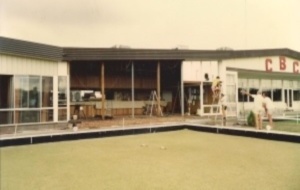
The 1990s
Due to ill health, Bill Lawrence retired late in 1990. His replacement was Terry Farrell who was employed on 5 April 1991 as club manager by the board. During the time lapse between Bill’s retirement and Terry’s appointment, the club was run by members of the board.
In 1990 the club hosted the NDBA Mattara Carnival. That year the NDBA added the club-selected Classic Threes to its program. The Cardiff team of Greg Solomons, Bob Robinson and Alan Winship were runners-up in a very closely contested final.
In April 1995, Terry Farrell resigned due to ill health and Karen Jeffkins was employed to fill the vacancy on a part-time basis. The club’s first computer was installed to assist Karen and club secretary Jack McKim in their growing workload.
At a quarterly meeting in 1996 the members voted to ratify a decision of the board to replace “The Les Woodward Green” with a synthetic surface at a cost of $80 000. A new sprinkler system was installed at the same time and pavers took the place of grass on the surrounds. The green was opened for play in October that year.
1998 was another busy year with new air-conditioning being installed by M & H Air to replace the old forced-draught system. Keno was introduced into the club. A new sound system was also installed. Following several years of work, a new constitution was endorsed by the Registrar of Cooperatives.
David Millard was employed as the club’s Bowls Coordinator/Coach in 1999 just prior to the start of the pennant season. Under his guidance, the club went on to win the NDBA No. 2 Pennant and the No. 5 grade were runners-up to Kotara in the semi-final that year.
Shadex shades were fitted on the northern end of both greens. A Panasonic 68 cm colour television was also installed in the bar area to accommodate a new Keno racing game that due to legal reasons was held in abeyance.
The 2000s
2001 – Wide screen television installed in the auditorium
2002 – Club exterior repainted with new colour scheme
2002 – Club celebrates its 50th Anniversary. A commemorative booklet was published
2007 – Floods destroy synthetic green
2009 – Club website goes online – www.cardiffbowlingclub.com.au
2010 – Introduction of in-house advertising on high definition TVs throughout the club
2011 – Cardiff wins the NDBA Zone 2 No. 2 Midweek Pennant
2012 – April – Both car parks off Myall Road completely resurfaced and individual spaces marked out
May – Club celebrates its 60th Anniversary with week-long activities
2018 – Synthetic green replaced
2019 – Cardiff wins the NDBA Zone 2 No. 6 Pennant
Club colour scheme changed to shades of grey. Illuminated external signage installed
2020 – March – Club enters Federal Government decreed shutdown due to Covid-19 virus epidemic
– August – Club reopens with restricted patronage
– October – The Blind Chef Bistro opens at Cardiff Bowling Club
2021 – August – Club enters Federal Government decreed shutdown due to Covid-19 virus epidemic
– October – Club reopens with restricted patronage
In conclusion
From a humble beginning in 1952 the club has grown from one green and a small building with one poker machine and 32 members to what we have today. Although built by additions on additions over some 60 years it is still a respectable structure with around 800 members, two greens, 20 poker machines, Club Keno, Fox Sports, TAB and Sky Racing.
The members, both men and women, have achieved a number of honours over the years.
This short history of our club tells only a small portion of the work carried out mostly by volunteers to create a successful bowling club. Hopefully this will encourage us all to strive for bowling success of the highest level into the future.
NOTE: This page is always under construction. Check back soon!
Compiled by Dennis Williamson – Updated by Ian Robson
